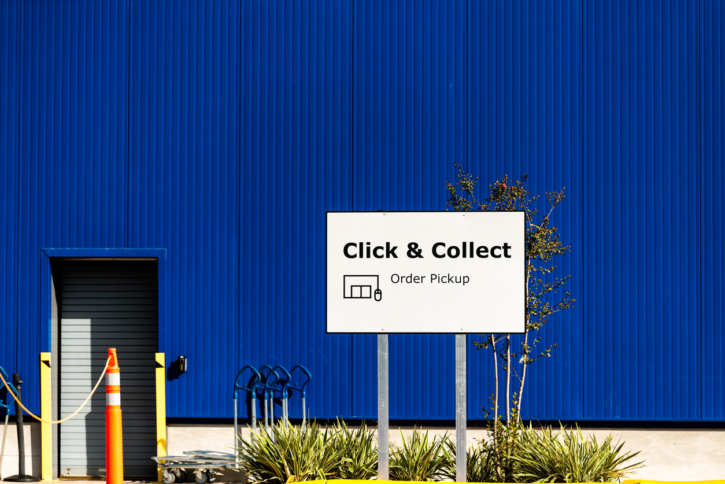E-commerce: how to launch an affiliate programme
If implemented correctly, affiliate marketing can be a very profitable acquisition strategy. To do this, you’ll need to enter into partnerships with relevant affiliate sites who will feature your products on their sites. When someone orders on your site via an affiliate link, the affiliate will receive a commission from you.
Now that you understand the principle of this strategy, we explain the importance of affiliate marketing in e-commerce and how to implement it.
The role of affiliate marketing in e-commerce
Thanks to affiliate marketing, e-tailers can outsource the promotion of their products and services. To do this, they contact influencers, bloggers, YouTubers and other content creators to set up partnerships. Each partner receives a unique affiliate link. They add this to their blogs, social media accounts and price comparison sites in strategic places.
The benefit to the affiliate publisher: they receive a commission when a consumer clicks on an affiliate link and buys a product.
The benefit for the e-tailer: this is a low-risk, low-cost business source!
Interesting fact: more than 16% of all e-commerce orders in the United States and Canada come from affiliate marketing. This figure may seem low, but it takes on its full meaning when compared with the market share of Google ads, which account for 18% of online orders in the United States.
For more e-commerce stats, click here.
In which sectors does affiliate marketing work best?
The most popular sectors for affiliate marketing in e-commerce are:
- fashion (23%)
- sport and outdoors (18%)
- health and beauty (14%)
Other well-performing sectors include travel, home and garden, IT and electronics.
But don’t worry if your products don’t fall under these categories! By implementing the best practices set out below, you have a good chance of boosting your sales using affiliate marketing, in any sector of business.
What are the different affiliate types?
Affiliate marketing is made up of 5 main types: CPC, CPA, CPI, CPM and partnerships. If you aren’t familiar with these, don’t worry, we’ll explain everything.
1. Cost per click (CPC)
With cost per click, advertisers are paid each time a web user clicks on their link or advertising banner. CPC makes it easy to measure user engagement, as a click corresponds to an interest in the affiliate link.
2. Cost per action (or acquisition) (CPA)
Cost per action, or acquisition, works a little differently to CPC. E-tailers only pay publishers once an action has happened (e.g. a purchase, newsletter subscription, e-book download, etc.). The risk for the e-tailer is lower because commissions are only payable if tangible results are achieved.
3. Cost per impression (CPI)
As its name indicates, the cost per impression is expressed in terms of the number of impressions. In other words, the e-tailer pays the publisher each time the ad (e.g. banner ad) is seen by a web user. Generally, commission for this affiliate type is low.
4. Cost per thousand (CPM)
Like CPI, CPM is based on an ad’s visibility. As soon as the advertising banner added to the affiliate publisher’s site reaches 1,000 impressions, a commission is paid to the publisher by the e-tailer. This method is often used for high-traffic sites.
5. Partnership
This affiliate type is a little different, because it’s not about clicks but about partnerships. The publisher receives a referral link, and as soon as someone in their network is referred, the e-tailer pays them a commission. This is an interesting solution for affiliates with a large network (e.g. macro-influencers).
How to create an affiliate strategy for an e-commerce site?
Now that you are aware of the advantages and challenges of affiliate programmes, it’s time to set up your own.
Here’s how:
1. Sign up to an affiliate platform
The simplest way to create an affiliate programme is to create an account on an affiliate platform such as Affilae, Awin or Effiliation, for example.
This type of platform will allow you to:
- track your clicks
- centralise your link stats
- find quality partner sites nationally and internationally.
2. Determine terms and conditions
The rate of commission paid to your partners must be determined accurately. It could be fixed (e.g. £1 per click/action) or based on a percentage (e.g. 10% of each sale).
Here are the elements to consider when fixing affiliate pay rates:
- your needs
- the affiliate type
- the audience of the publishing site
- the level of audience engagement
- the quality of the content
- past performance in other affiliate programmes, etc.
At this stage, you will also need to determine the terms of payment, the rules regarding unethical practices and the duration of the cookie period.
🍪
The duration of the cookie period, in this context, corresponds to the period of time during which an affiliate can demand a commission from the e-tailers after obtaining a click on its link.
3. Recruiting your affiliates
There are several ways to find relevant affiliate sites:
The first and most traditional approach is to list the most important and strategic keywords for you. Type these expressions into Google and contact the 5 sites that come out on top of the search results for these queries.
Your own site
You can create a page on your e-commerce site dedicated to your affiliate programme. As a result, publishers will be more inclined to contact you to set up a partnership. Of course, you will have the option of accepting or refusing their proposal.
💡 Remember to add a registration form on this page to make it easier to get in touch.
Specialist sites
As mentioned above, you can use sites dedicated to affiliate marketing to find serious partners. The advantage of these platforms is that you don’t have to draw up your own contracts. Everything will be organised by the site managers.
Your business network
You can promote your affiliate programme on your social media accounts and to your customers and business partners.
Specialist directories
You can also request to appear in listings and specialist directories such as “the best e-commerce affiliate programmes”, for example. This will enable you to be seen by those who are looking for new programmes.
Social media
Finally, you can also work with influencers in your niche area to promote your products or services through affiliate marketing. To do this, go straight to where they are: on social media.
4. Track and optimise your links
Are your first affiliate links set up on your affiliates’ sites or social media? Congratulations! You’ve achieved your first objective.
But don’t be too quick to claim victory!
After your affiliate programme has been set up, you’ll need to use analysis tools to track key performance indicators (KPIs) such as conversion rate, ROI, etc.
This will help you understand what works and what doesn’t. Then you can fine-tune your strategy (for example: improve the copywriting on one of your advertising banners).
Affiliate programmes & e-commerce: a summary
Setting up an affiliate programme for e-commerce sites is an increasingly common practice. It offers several benefits. It will enable you to increase your sales and attract qualified traffic without investing too much effort or money.
But for your affiliate programme to be effective, you need to follow these 4 steps:
- sign up to an affiliate platform
- determine terms and conditions
- recruit affiliate partners
- track and optimise your links
Still have some time to spare? Don’t miss out on this real driver for customer acquisition and retention, browse our complete guide to setting up an e-commerce email strategy.





